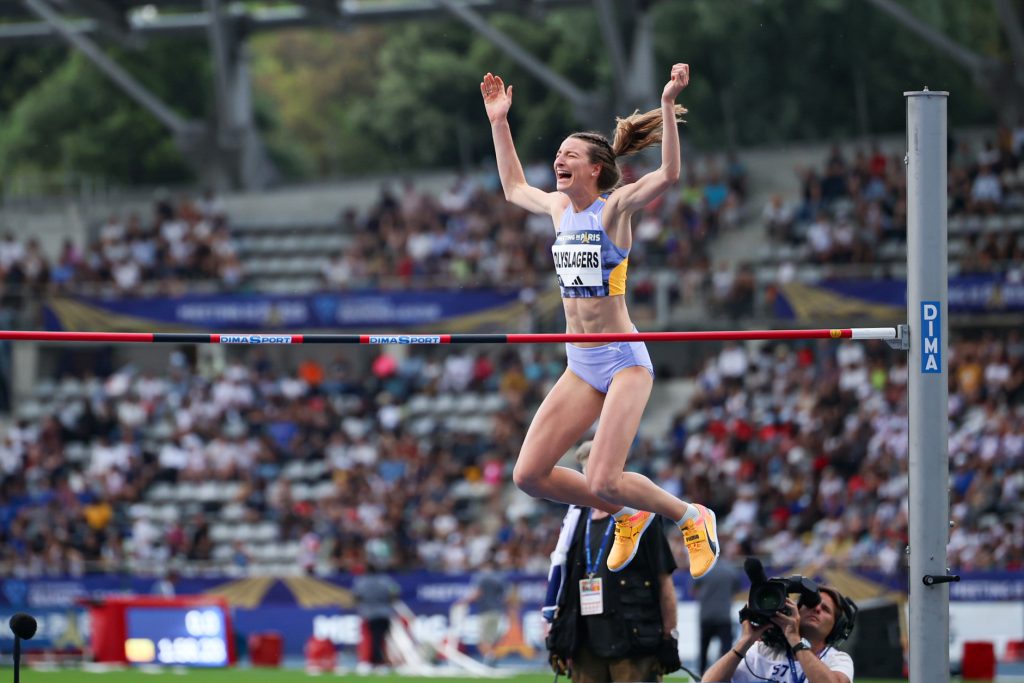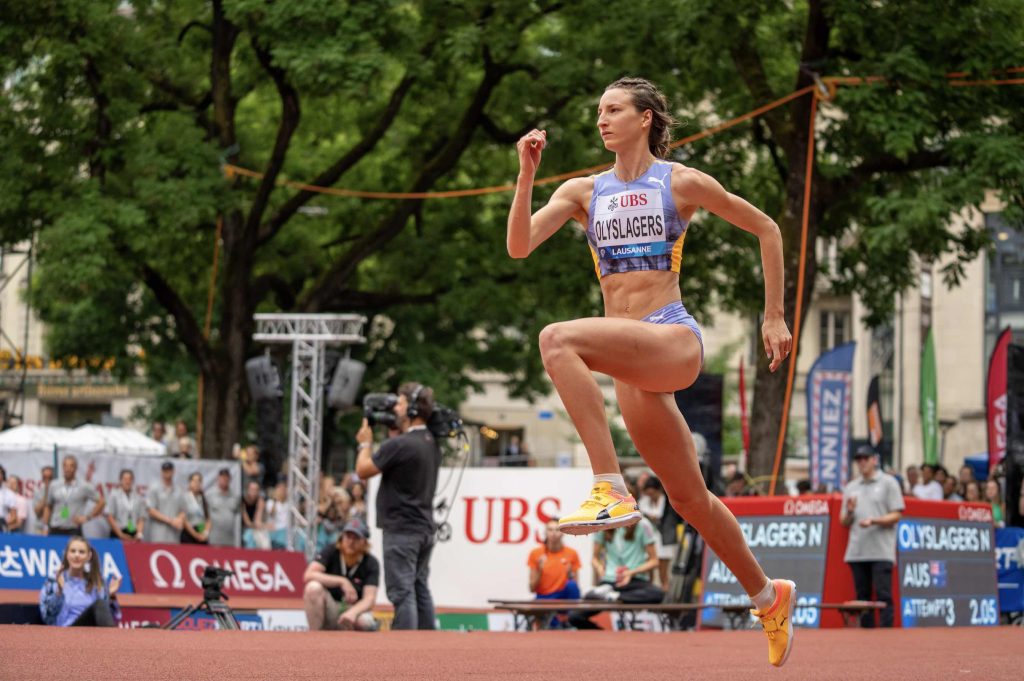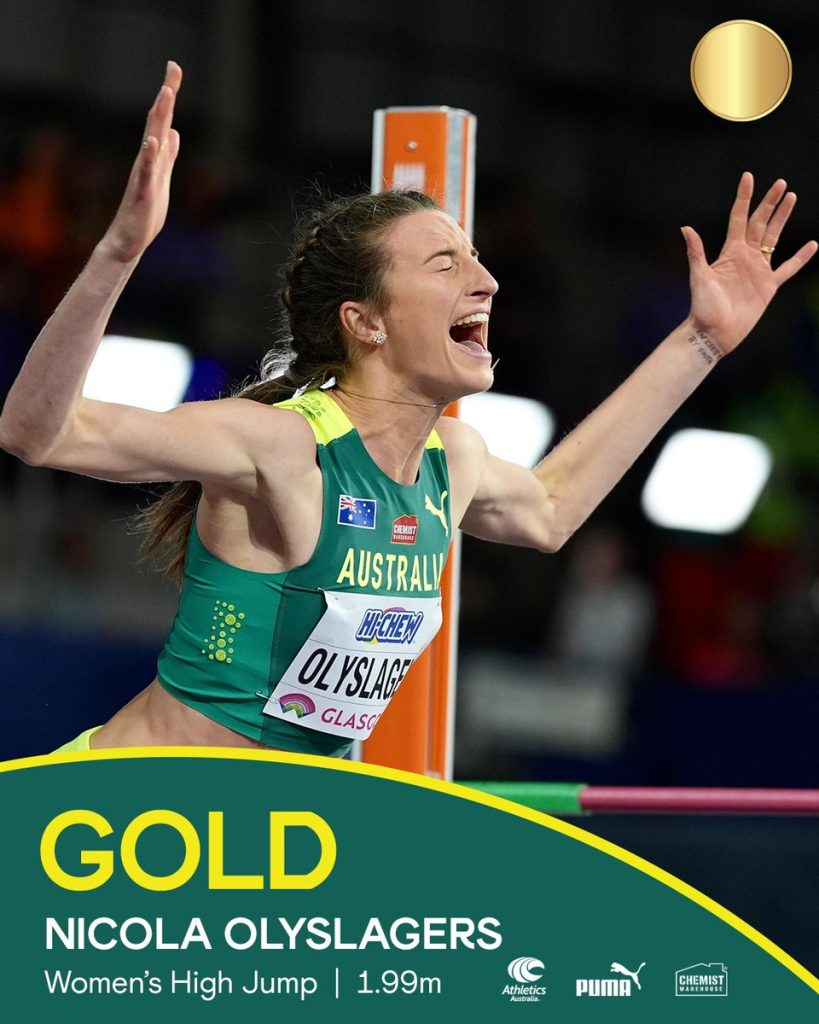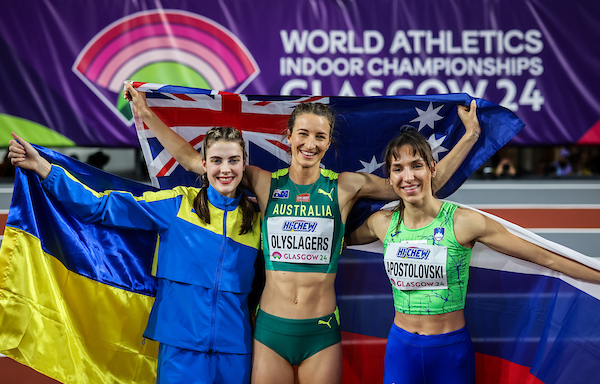This is the third story for March 1, 2024, and Day 1 of the WIC Glasgow 2024. These stories are written by our friend in Oxford, England, the one, the only, Stuart Weir, who provides remote coverage for these wonderful championships. We thank Stuart and hope for his speedy recovery.
Nicola Olysagers is the World Indoor Champion
Nicola Olysagers is the World Indoor Champion with a leap of 1.99. I first met Nicola McDermott in 2017 when she competed at the London World Champs but did not make the final. I was on the Gold Coast in 2018 when she won bronze with 1.90 in the Commonwealth Games in her native Australia. Since then, I have seen her take Olympic silver and World Outdoor bronze (2023); she has 10 two-meter jumps to her credit.
The Glasgow result was:
1 Nicola Olysagers 1.99
2 Yaroslava Mahuchikh 1.97
3 Lia Apostolovski 1.95
She commented on the competition: “I felt today was going to be a big challenge because I hadn’t competed indoors since 2017. I came here today because I knew I had to get outside my comfort zone, outside of Australia. With that mindset and the fast track, I had to fight for every jump. Then the bar went up to 1.99, and I remembered I had jumped the same height on a cold, windy night in Melbourne two weeks ago. I slightly doubted that I might get injured if I ran too fast, but I recognized that it was just fear. I know that the love of God can destroy fear, so I said, I need your love right now. I jumped and was smiling; the next thing you know, it was a 10 out of 10 jump. Today’s goal wasn’t to win; it was to jump high, and I just got the title from it”.
She is a brilliant interviewee. I remember talking to her about the challenge of Covid and lockdown and how it affected training. She told me she was fortunate to live near the sea and trained on the beach. She had a ready-made sandpit to jump into! She trained barefoot to strengthen her feet. And her ice bath? The ocean, of course. She added that she was always pleased to see dolphins as that was an indication that there were no sharks in her ice bath!

Sometimes, in interviewing an athlete, one asks a question and strikes gold. That was my experience with Nicola when I asked her how she got from 1.90 in 2018 to 2 meters in 2021. I expected a typical “I worked harder in training, etc., etc..” The answer I got was that she completely changed her technique and lifestyle!
This is what she told me:
“We changed my whole technique. I’d won the bronze medal at the Commonwealths. But when I went to Europe, I knew that I could jump very high with my body shape, but my technique was lacking. So I sat down with my coach, and we decided I had to change my method to be more power- and speed-based. That decision was hard because I would have lost two years trying out a new technique if it didn’t work out. Potentially, I would miss out on the 2019 World Championship, but the aim was to ensure I was ready for 2020. We changed the way that I trained and the way I approached jumps. I was willing to put to work into it because I wanted to reach my full potential. By 2020, I was repeating the new technique and getting better. Now I know how to high jump – that may seem strange to say when I’ve been high jumping for years – but I understand it intimately and know what is required to clear heights. I hope that now that I’ve cleared 2m, it is replicable and that I can do it repeatedly, regardless of the competition or conditions.

“My run-up was 10 steps, and I would begin the run-up with a few steps, run into it, and then do some big bounds. And after these big bounds, I would run, and I would jump, but the thing was that I loved jumping with the claps of the crowd. As I was running towards my marker, I would go about a meter past my actual run-up marker, which would mean that I would have too much speed at the beginning and wouldn’t be able to control it towards the end of the jump. Rather than having an excellent controlled takeoff position, I would be very close to the bar and then try to maneuver my body over the bar at a speed I was uncomfortable with and without control. As a result, my technique over the bar was more up and down rather than a slingshot type of effect. Now, I jump with nine steps from a standing start, running into the jump. This means that I have to generate power right from takeoff, which I had never been able to do before. My technique now is entirely accurate. If I move my run-up back, I jump further away from the bar, and because of that, I slingshot myself over the bar in power. I can be accurate and use my speed towards the last few steps of the jump. And that has allowed me to be accurate over the bar.

“Then, about lifestyle, quarantine gave me a chance to sit down and think about what made 2020 my most successful season. I felt that how I approached my diet, my sleeping, and my social life had been good. I asked myself what I needed to do to get an Olympic gold medal. What is required of me? I live on the coast of New South Wales, with beaches everywhere, and I love being outdoors. Summer was just around the corner. But I thought, ‘No, you can’t go to the beach after training. Although it’s a great recovery, it will also make you tired, so you can’t train 100% the next day. So, go home, shower, sit in your room, and read a book!’ Beforehand, I would have thought I was missing out, but now my habits have aligned with my goals. I’m excited to jump, and I am not comfortable staying at home for two weeks, not leaving the house except for training, and not feeling that I’m missing out because I have bigger goals. Doing that has given me a new focus and perspective. I don’t mind missing out on things – I don’t see it as missing out. I get to jump this height, which involves a cost and a sacrifice. Sacrifice is not unknown to me. It’s just stepping in deeper and monitoring everything I am doing to the point that I have so many journals I write in every night just to replicate the amount of training I am doing. Just so I know what it takes to jump two meters, not just once, that repeatedly”.
Dedication, it seems, brings success.
Author

Since 2015, Stuart Weir has written for RunBlogRun. He attends about 20 events a year including all most global championships and Diamond Leagues. He enjoys finding the quirky and obscure story.
View all posts






















